We've been brewing our own ales and lagers for about a year now - tonight will be either the 10th or 11th batch. We've made everything ranging from scotch ale to hefeweizen to pilsner to a belgian saison - and all have been extremely delicious.
Tonight, we got a coffee stout started, which should have an alcohol content of around 8%. This is the kind of beer that will wake you up, put hair on your knuckles, and then slap you across the face. So how do you go about making this tasty beer, you ask? Let's go through a somewhat simplified account of what goes into a batch of homebrew.
The very first step of brewing is to make what's called the "grain tea." It's in fact quite similar to making a pot of tea, but instead of tea leaves I'm using a few pounds of crushed grains to add flavor and color to the beer.
So, first, I filled my brew-pot with about three and a half gallons of cold tap water.
Then I heated it to 155 degrees Fahrenheit. At this point, I cut off the heat, placed my grains in a porous mueslin sack, and added it to the hot water, letting it steep for about half an hour.
Then I removed the grain bag, and brought this dark and delicious concoction to a boil. Now it's time to add the malted barley - the sweet stuff that will later become the alcohol in the beer. To this batch, I added about five pounds of liquid extract and three pounds of dry extract, getting us to a total of eight - this is what gives us our final ABV of 8%.
The grain tea now becomes a hot and sweet mixture that we call "wort." I bring this wort to a boil, and add the bittering hops.
The wort will boil for sixty minutes, and during this period you usually add more hops at different stages - but this coffee stout only calls for the first round of bittering hops, so I just let it boil for the full hour.
The next step is to cool the wort, so that we can add the yeast. Most ale yeasts are comfortable working in the range of 60 to 80 degrees F. So after the hour boil has completed, I cut off the heat and place the brew-pot on ice. The wort needs to be chilled to about ninety degrees.
When the wort is cool enough, I add it to the fermentation bucket. This is a plastic bucket with an air-tight lid and an air-lock to let carbon dioxide out. When poured into the bucket, we've got about four gallons of beer. To get to the magic number of five gallons (the standard homebrew batch size), I add another gallon of cold spring water. The cold water also helps bring down the temperature to about seventy degrees.
At this point, it's time to add the yeast. I used a Wyeast London Ale liquid yeast. After stirring vigorously to aerate the beer, I snap the lid on, and put in the airlock.
The bucket then goes into a dark corner with a constant temperature of about 70 degrees. Tonight's work is done! The beer will sit in this fermenter for about a week, where the yeast will eat the sugars in the beer, and create the by-products of alcohol and carbon dioxide. The CO2 escapes out the airlock, but the alcohol stays in the beer.
Whoo! We're officially on the way to making a coffee stout (the coffee is actually added much later in the process, right before bottling). Check back for more updates!

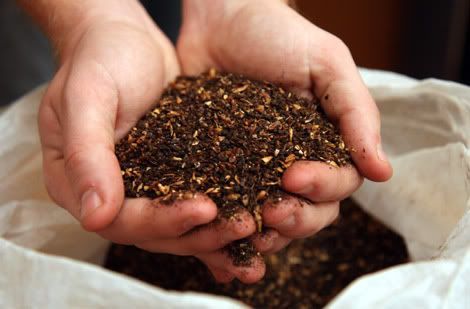
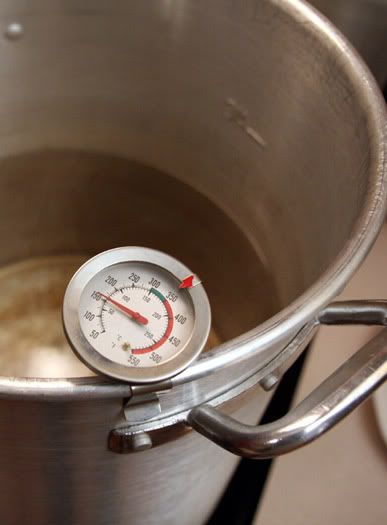
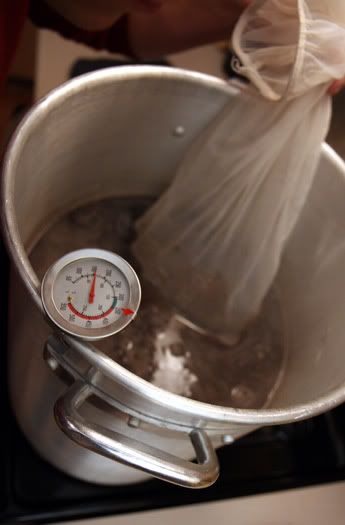
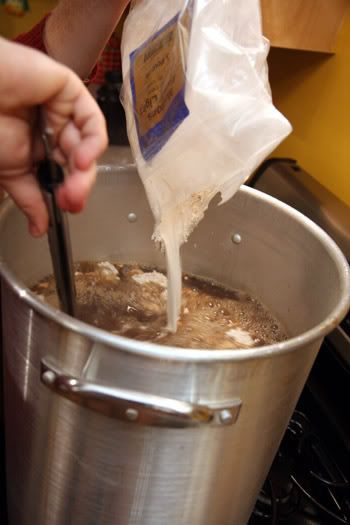

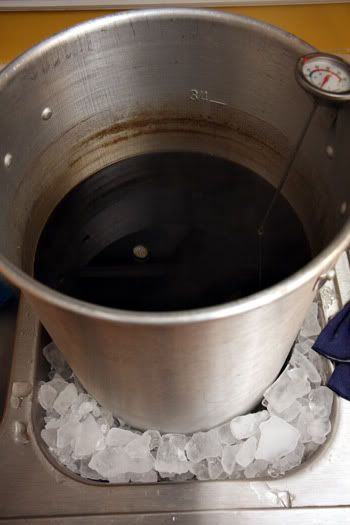
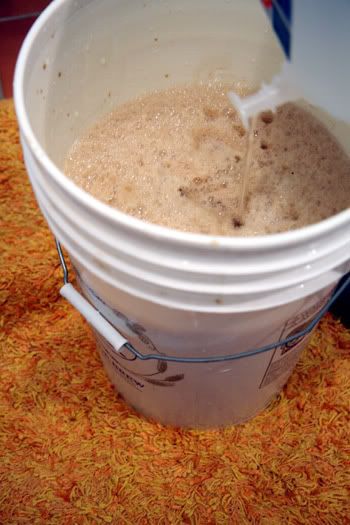
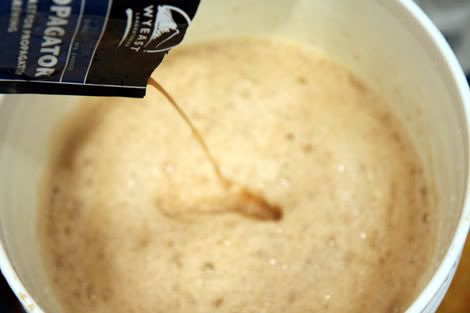

4 comments:
Save me one, ToooRAY
- A-Frame
It's going to be a lovely brew!!!
The fact that I was planning on learning how to brew an espresso stout myself, I have to say that I am giddy that we are to n*sync.
I have to show Matt this! - Mary
Post a Comment